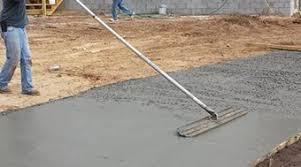Residential Concrete Construction: Building Strong Foundations for Modern Homes

When it comes to building a home, the choice of construction material plays a vital role in ensuring strength, safety, and longevity. Among all materials, concrete has stood the test of time as one of the most reliable and versatile. Residential concrete construction is not just about laying a solid foundation—it extends to walls, floors, driveways, patios, and even decorative features. With its durability, adaptability, and cost-effectiveness, concrete remains the backbone of modern residential projects.
What Is Residential Concrete Construction?
Residential concrete construction refers to the use of concrete in building various parts of a house or housing complex. It can include foundations, slabs, retaining walls, footpaths, and driveways, as well as decorative finishes such as stamped patios or polished flooring. Concrete is created by mixing cement, aggregates (such as sand and gravel), and water. When poured and cured correctly, it forms a robust structure that can withstand environmental stresses for decades.
Why Concrete Is Popular for Homes
Homeowners and builders prefer concrete for several reasons:
· Strength and Durability: Concrete can withstand heavy loads, making it ideal for foundations and driveways. It also resists wear and tear better than wood or asphalt.
· Weather Resistance: From intense sunlight to heavy rain, concrete endures harsh weather conditions without losing its integrity.
· Low Maintenance: Unlike timber that requires regular painting or sealing, concrete surfaces only need occasional cleaning and resealing.
· Design Versatility: With techniques like colouring, stamping, and polishing, concrete can be customised to match almost any style, from contemporary to rustic.
· Eco-Friendly Options: Many modern concrete mixes incorporate recycled materials, making them more sustainable.
Key Areas of Residential Concrete Use
1. Foundations and Slabs
Every strong home begins with a stable foundation. Concrete slabs and footings provide the base for houses, ensuring structural integrity and preventing ground movement from damaging walls or floors.
2. Driveways and Pathways
Concrete driveways are a top choice for homeowners because of their durability and curb appeal. Whether plain, coloured, or exposed aggregate, they can handle daily traffic and enhance the property’s overall look. Pathways made of concrete add functionality and style to gardens and yards.
3. Floors and Interiors
Polished concrete flooring is becoming increasingly popular inside homes. It offers a sleek, modern appearance, is easy to maintain, and works well with underfloor heating systems.
4. Retaining Walls and Landscaping
For sloping blocks or garden features, concrete retaining walls provide stability and structure. They can be decorative as well, blending with landscaping designs.
5. Outdoor Living Areas
Concrete is a fantastic choice for patios, pool surrounds, and outdoor kitchens. It can be textured for slip resistance and coloured or stamped for a decorative touch.
Benefits of Residential Concrete Construction
· Longevity: A well-constructed concrete element can last 30–50 years or more with proper care.
· Cost-Effective: Though the initial investment may be slightly higher than other materials, the low maintenance and long lifespan make concrete more economical over time.
· Energy Efficiency: Concrete has thermal mass properties, meaning it absorbs and stores heat. This can help regulate indoor temperatures, reducing energy bills.
· Customisation: Homeowners can choose from plain grey finishes to sophisticated polished designs, ensuring both function and beauty.
· Safety: Fire-resistant and non-combustible, concrete offers an added layer of safety in residential construction.
The Process of Residential Concrete Construction
1. Planning and Design – Every project begins with assessing the homeowner’s needs, site conditions, and design preferences.
2. Site Preparation – The area is excavated, levelled, and compacted for a stable base.
3. Formwork and Reinforcement – Wooden or metal forms shape the concrete, while steel reinforcement (rebar or mesh) is added for strength.
4. Mixing and Pouring – Concrete is carefully mixed and poured into place, then spread and compacted.
5. Finishing – Depending on the application, finishing techniques such as trowelling, stamping, or polishing are applied.
6. Curing – Proper curing ensures the concrete reaches its maximum strength, often taking several days to weeks.
Maintenance Tips for Homeowners
Concrete may be low maintenance, but a little care goes a long way:
· Seal surfaces every few years to protect from stains and weather damage.
· Clean spills promptly, especially oil or chemicals on driveways.
· Repair small cracks early to prevent them from spreading.
· Avoid using harsh de-icing salts in colder regions.
Choosing the Right Contractor
The quality of residential concrete construction depends heavily on the contractor’s expertise. Homeowners should look for licensed, insured, and experienced professionals with a solid track record. Asking for references, viewing past projects, and getting detailed quotes can help ensure the project runs smoothly and meets expectations.
Final Thoughts
Residential concrete construction is more than just a building method—it’s an investment in strength, style, and long-term value. From sturdy foundations to elegant floors and inviting outdoor spaces, concrete brings unmatched durability and versatility to homes. With proper planning, professional installation, and minimal maintenance, concrete can help homeowners create safe, beautiful, and enduring living spaces for generations to come.
- Art
- Causes
- Crafts
- Dance
- Drinks
- Film
- Fitness
- Food
- Games
- Gardening
- Health
- Home
- Literature
- Music
- Networking
- Other
- Party
- Religion
- Shopping
- Sports
- Theater
- Wellness


